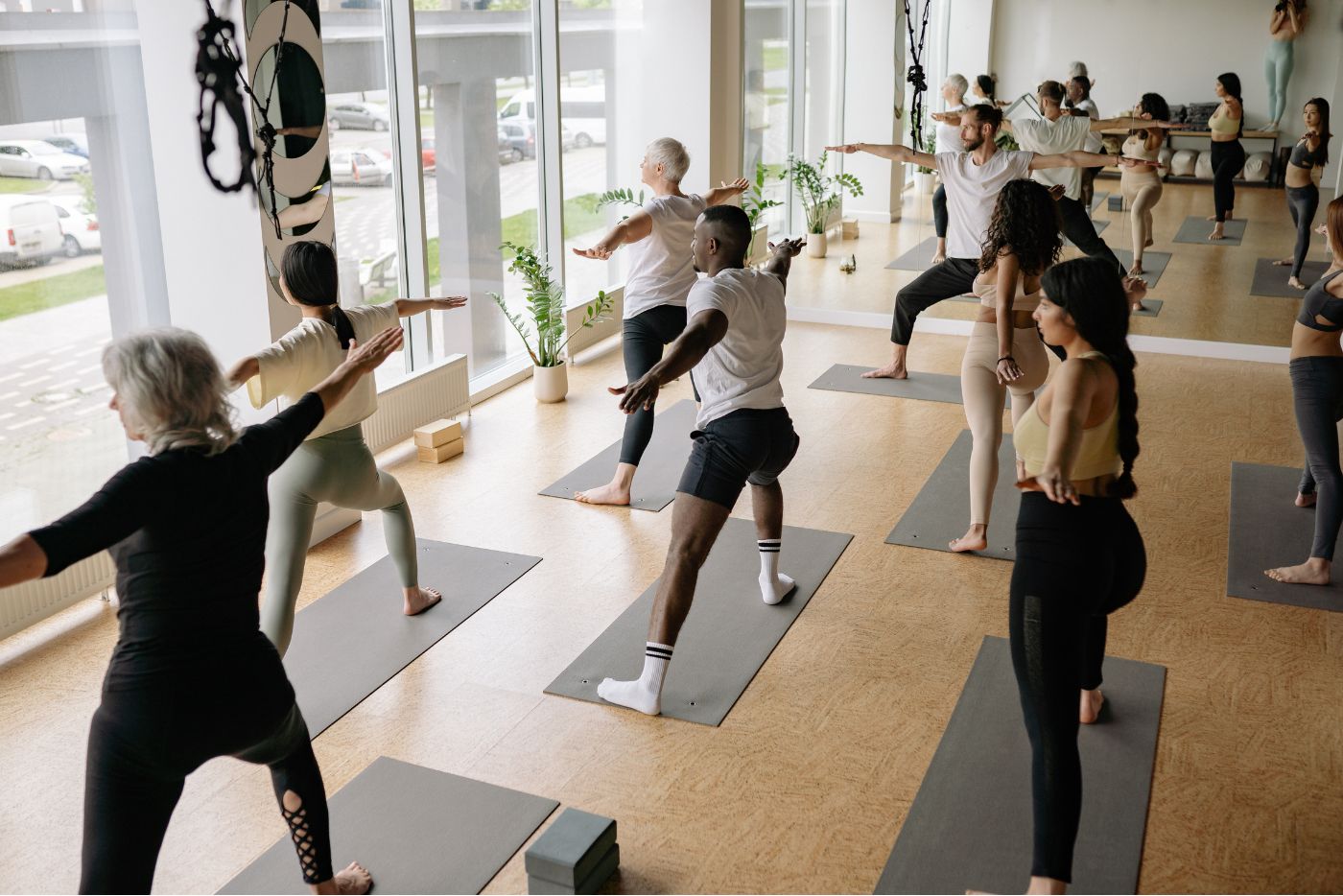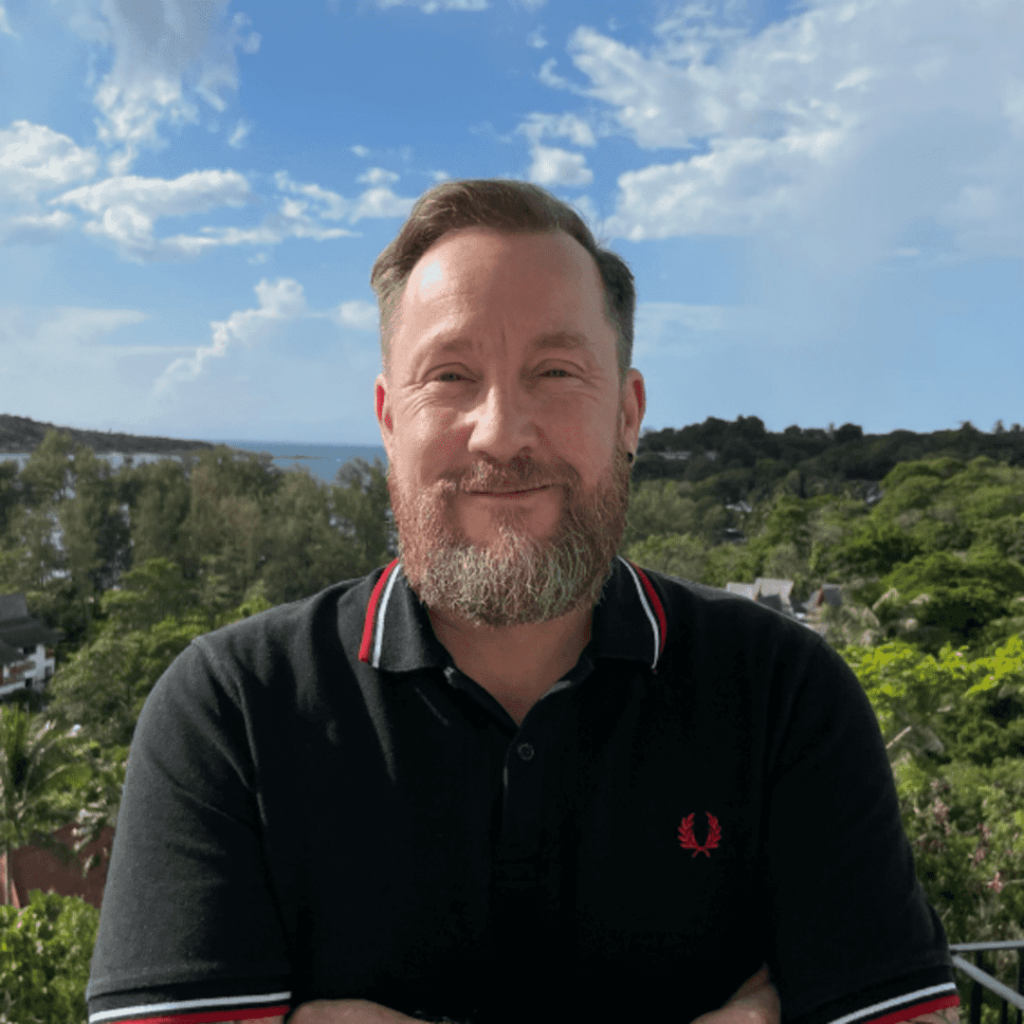How Yoga For Trauma Can Heal PTSD

Many people think of yoga merely as a spiritual pursuit, or a way of keeping fit. But yoga is much more than that. Yoga can also benefit people who have been affected by trauma, effectively healing PTSD, reducing symptoms and allowing people with PTSD a life worth living again.
In this blog, we explore yoga for trauma, and how it can help you recover from PTSD. For more information on how we incorporate yoga at Yatra Centre for trauma healing, contact us on +66 96 916 3287.
Yoga Calms the Nervous System
Yoga for trauma is incredibly calming for the nervous system, which is a key part of healing from PTSD. It does this in a multitude of different ways:
Slow, deep breathing
Slow, conscious breathing in yoga stimulates the vagus nerve, which plays a key role in activating the parasympathetic nervous system. This shifts the body out of a stress response, helping to lower heart rate, reduce blood pressure, and create a profound sense of calm.
Mindful movement
Moving through yoga poses with awareness grounds the body in the present moment and interrupts the fight-or-flight patterns of the sympathetic nervous system. This physical grounding signals safety to the brain, encouraging muscles to release tension and the mind to soften.
Focused attention
Yoga invites steady, focused attention on bodily sensations, breath, or movement. This focused awareness helps break cycles of rumination and anxiety, calming the mind and reducing overstimulation of the nervous system.
Increased body awareness
By tuning into physical sensations during yoga, you develop a deeper sensitivity to what your body is experiencing. This increased interoceptive awareness supports emotional regulation, allowing you to recognize signs of stress earlier and respond in healthier ways.
Yoga Facilitates Emotional Processing
Emotions are not just mental experiences. They are also held in the body as physical sensations, tension, and energy patterns. When emotional experiences are suppressed, ignored, or become overwhelming, the nervous system can stay stuck in survival responses such as fight, flight, or freeze. Yoga creates an environment where these stored emotions can safely begin to surface and move through the body.
Through slow movement, breath awareness, and mindful presence, yoga invites you to stay connected to your internal experience without judgment. As you hold a posture or move through a sequence, old feelings such as sadness, anger, fear, or grief may naturally arise. Rather than needing to explain or analyze them, yoga encourages you to simply witness and feel them, allowing the body to process emotions at its own pace.
Long-held poses in styles such as Restorative Yoga and Yin Yoga help soften the body’s defenses, making it easier for emotional energy to release. Breathwork and body awareness practices further support the gentle integration of difficult feelings, often bringing a sense of relief, clarity, and inner groundedness.
Emotional processing through yoga is not something forced or directed. Healing occurs as the body unwinds naturally within the safety of mindful awareness.
Strengthening the Mind-Body Connection Through Yoga
The mind-body connection refers to the awareness that your mental and emotional state is closely linked to your physical sensations and responses. Trauma survivors experience a disruption in this connection, either because the body felt unsafe during the traumatic experience or because disconnection became a coping mechanism. Yoga for trauma helps rebuild this bridge by encouraging you to notice physical sensations in a controlled, safe environment.
Over time, this awareness brings a sense of empowerment. Rather than being overwhelmed or hijacked by emotional reactions, you can start to catch the early signs of distress as they arise in the body. This gives you a greater sense of control over your responses, which is particularly important for trauma survivors who often feel at the mercy of flashbacks or emotional triggers.
Supporting Neuroplasticity Through Yoga
Neuroplasticity is the brain’s ability to rewire itself by forming new neural connections. This is essential in trauma recovery, because traumatic experiences often lay down pathways associated with hypervigilance, fear, and avoidance. Yoga supports neuroplasticity by offering repeated experiences of safety, regulation, and presence, which gradually overwrite fear-based patterns with healthier responses. Each time you shift from anxiety to calm through breath or movement, you’re literally teaching your brain a new way to be.
One of the key mechanisms through which yoga supports neuroplasticity is focused attention. When you concentrate on your breath, posture, or physical sensations, you engage regions of the brain responsible for decision-making, self-awareness, and emotional regulation. You also reduce activity in the amygdala, which is the brain’s fear center. This recalibration trains the brain to shift out of survival mode and into a state of balance, even when stressors arise.
Which Types of Yoga Are Best For Trauma?
The most effective forms of yoga for trauma are those that emphasize safety, body awareness, and self-regulation. Trauma-sensitive yoga is specifically designed to create a supportive, non-coercive environment. In this style of yoga, participants are invited to explore movement and breath at their own pace. This approach helps rebuild a sense of agency and trust in the body.
Restorative is another powerful option, using props to fully support the body in gentle poses held for longer periods. This deep relaxation helps calm the nervous system and create internal conditions where healing can naturally unfold.
Yin yoga can also be helpful when offered carefully, as it encourages stillness and long-held stretches that can release physical and emotional tension. Focus on feeling connected to the present-moment experience and adjust poses as needed to maintain a sense of safety.
Other styles of yoga can also be effective at healing and reducing symptoms of trauma, but they can sometimes be too activating. Vinyasa and ashtanga yoga styles can be quite vigorous, which can lead to over-stimulation of the nervous system and overwhelm.
Hatha yoga is often slower than vinyasa and ashtanga, but this may also be too much for you at the moment. If you are unsure, speak with the teacher before the class, and decide together whether their teaching style is right for you.
How Long Does Yoga For Trauma Take to Work?
It is difficult to give an exact timeframe on how long it will take for your PTSD symptoms to reduce by practicing yoga. Many people with trauma find they feel more relaxed after their first yoga session, though for others it can take a couple of months of consistent practice to realize significant benefits.
This is variation in how long it takes yoga for trauma to work for you depends on a few different factors:
- Severity of trauma. Particularly severe trauma can take longer to recover from than other trauma.
- Nervous system dysregulation. If your nervous system dysregulation is pronounced, restoring it back to mainly parasympathetic state can take time.
- Consistency. The nervous system takes time to heal, and unexpressed emotions do not usually come to the surface right away. Practicing yoga a few times a week may speed up the process. But listen to your body, and take it easy. Healing from trauma is a marathon, not a sprint.
Yoga For Trauma at Yatra Centre
If you’re living with the effects of trauma or PTSD, you don’t have to face it alone. At Yatra Centre, we integrate trauma-informed yoga into a wider healing approach that gently supports your body and mind back to safety, balance, and connection.
Whether you’re new to yoga or returning to it after time away, our experienced team will meet you where you are. Contact us today on +66 96 916 3287 to learn more about how yoga for trauma can be part of your recovery journey.

Mike Miller
Founder & Clinical Director
Mike Miller is a Certified Clinical Trauma Professional, Certified Addiction Therapist, and EMDR Therapist with advanced training in trauma and mental health. He has over 20 years experience delivering behavioural health treatment to clients internationally. As a leading trauma expert, Mike developed the Yatra programme in 2022 to accelerate healing and support lasting transformation.
Subscribe to our newsletter.
Subscribe to our newsletter and join a supportive community dedicated to understanding, overcoming, and transforming personal trauma.
Related Articles
Can Trauma Lead to Hypersexual Behavior? A Closer Look
Trauma can disrupt a person’s life in multiple ways, to the point of affecting aspects of…...
Why a Somatic Healing Retreat Might Be Exactly What You Need
You’ve tried therapy. You’ve read the books. You’ve done your best to manage stress, anxiety, or…...
Trauma Healing and Rehab in Thailand: An Interview with Yatra
Addiction and unresolved trauma affect millions of individuals and families around the world. These challenges are…...
Can PTSD Meds for Nightmares Help You Sleep?
Research from the National Center for PTSD shows that over 90% of Vietnam vets with post‑traumatic…...



